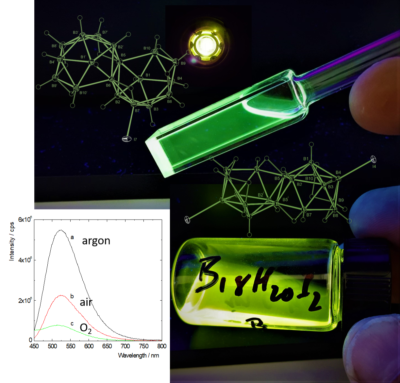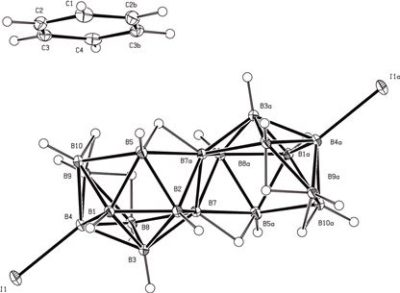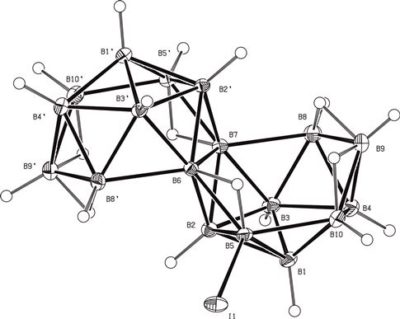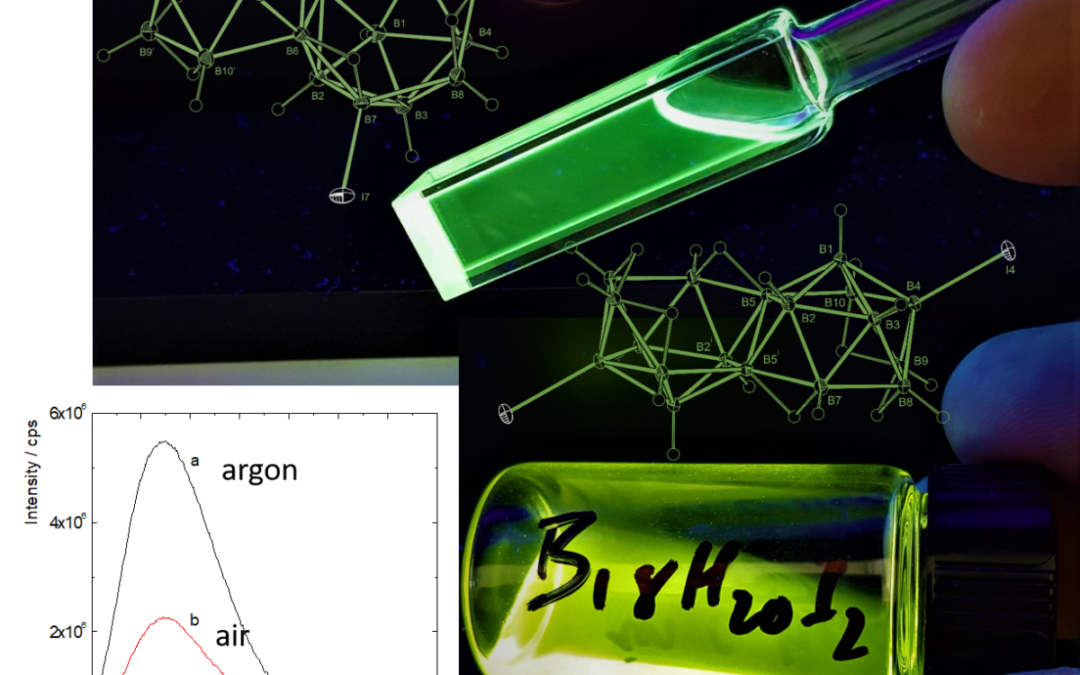
The latest contribution to our growing portfolio of usefully luminescent boranes. In this paper we describe the effect of iodination on the luminescence from the laser borane anti-B18H22. Our high-yield synthetic methods provide new highly phosphorescent species that efficiently generate singlet-oxygen. So, if you are in search of photosensitization of oxygen, give our molecules a try!
Treatment of the laser borane anti-B18H22 with iodine in ethanol gives the monoiodinated derivative 7-I-anti-B18H21 in 67% yield, or, by reaction with iodine or ICl in the presence of AlCl3 in dichloromethane, the diiodinated derivative 4,4′-I2–anti-B18H20 in 85% yield. On excitation with 360 nm light, both new compounds give strong green phosphorescent emissions (λmax = 525 nm, ΦL = 0.41 and λmax = 545 nm, ΦL = 0.71 respectively) that are quenched by dioxygen to produce O2(1Δg) singlet oxygen with quantum yields of ΦΔ = 0.52 and 0.36 respectively. Similarly strong emissions can be stimulated via the nonlinear process of two-photon absorption when exciting with 720 or 800 nm light. The high quantum yields of singlet-oxygen production, coupled with the option of two-photon excitation, make the new compounds promising O2(1Δg) photosensitizers. The molecular structures of both compounds were determined by single-crystal X-ray crystallographic studies as well as multinuclear NMR spectroscopy and mass spectrometry. Time-resolved UV–vis spectroscopy was used to delineate their photophysical properties, and the electronic-structure properties of the emitting species were determined by means of multiconfigurational quantum-chemistry computations.


To download the full article click HERE

